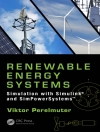This book is intended for use both in the industry and the academia. It introduces the physical, chemical and the mechanical properties as well as the characterization of bamboo. Novel industrial applications in structural, non-structural, reinforcement, afforestation, land reclamation, environmental significance, textile, medical, geotechnical, hydraulic, food, pulp and the paper industries are addressed in detail.
Bamboo has been used for centuries as a structural material as well as in diverse engineering applications, food and medicinal purposes, especially in Asia. As a natural fiber composite, bamboo has the potential for many developments in academic and industrial research. Current literature on composites tends to focus on bamboo as a plant or solely as a structural engineering material. This book seeks to bring together these two extremes and provides a holistic resource on the subject.
Tabella dei contenuti
1 Bamboo Taxonomy and Distribution across the Globe.- 2 Regeneration, Cultivation and Sustenance of Bamboo.- 3 Properties of Bamboo.- 4 Bamboo as Fuel.- 5 Applications of Bamboo.- 6 Current Trend in Bamboo Analysis.- Appendix.- Index.
Circa l’autore
Professor Ester Akinlabi is a researcher and lecturer at the Department of Mechanical Engineering Science, Faculty of Engineering and the Built Environment (FEBE) at the University of Johannesburg (UJ). She was selected, from 57 nominations, to join the South African Young Academy of Science (SAYAS) in 2014.
Prof Akinlabi researches techniques to combine the best characteristics of different metals into a hybrid that is capable of much more than if it were built from a single material. In 2013, she was rated a Young Researcherby the National Research Foundation (NRF) in the areas of material science and technology, laser materials processing, and friction stir welding.












